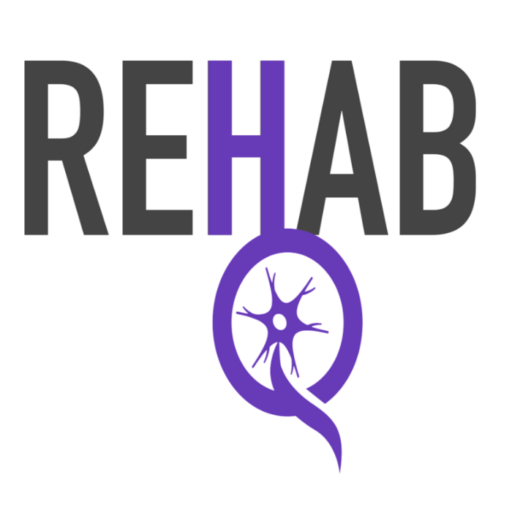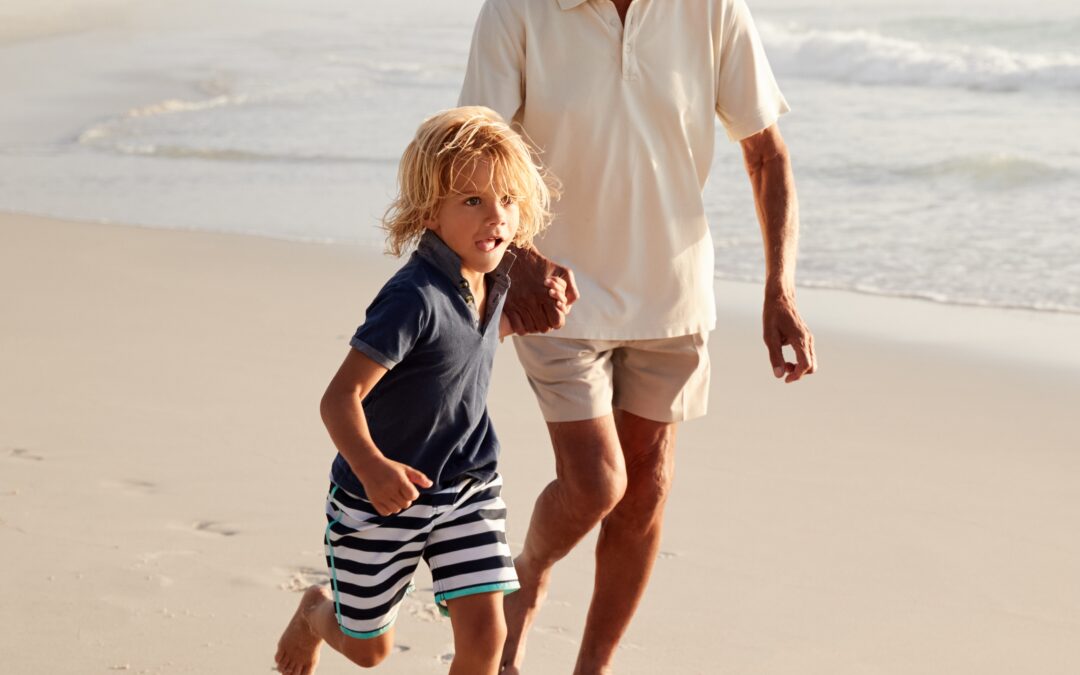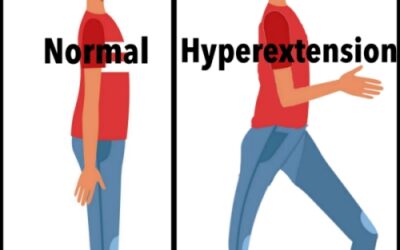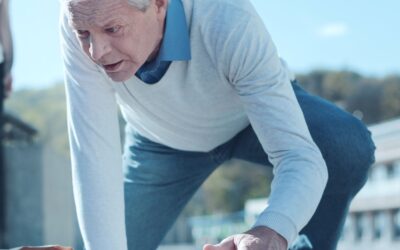How do you regain the ability to walk without fear of falling?
Fear of falling is a MAJOR concern for a lot of people. In the early stages of rehabilitation, the goal is to regain movement control at the hip, knee, and ankle. This is necessary to ensure that someone can support their body weight. Once you have established good movement control, you are ready to start adding additional challenges to standing and walking. It is not just enough to be able to support your body weight, It is also necessary to be able to move the “free leg” (leg in the air) in different directions. This is important for things like turning, stepping over obstacles, and walking in small spaces (where you might need to walk with your feet very close together).
All that being said, here is part two in a blog series on what I am calling “advanced walking exercises”. These exercises are critical in order to regain the ability to walk without fear of falling.
1. Kneeling Clam Shell
A kneeling clam shell is great to help isolate the hip muscles. More specifically the hip rotators. Again, a necessary skill in order to perform turn steps. For this exercise you are going to start in kneeling (on the involved leg) and rotate the opposite knee out to the side.
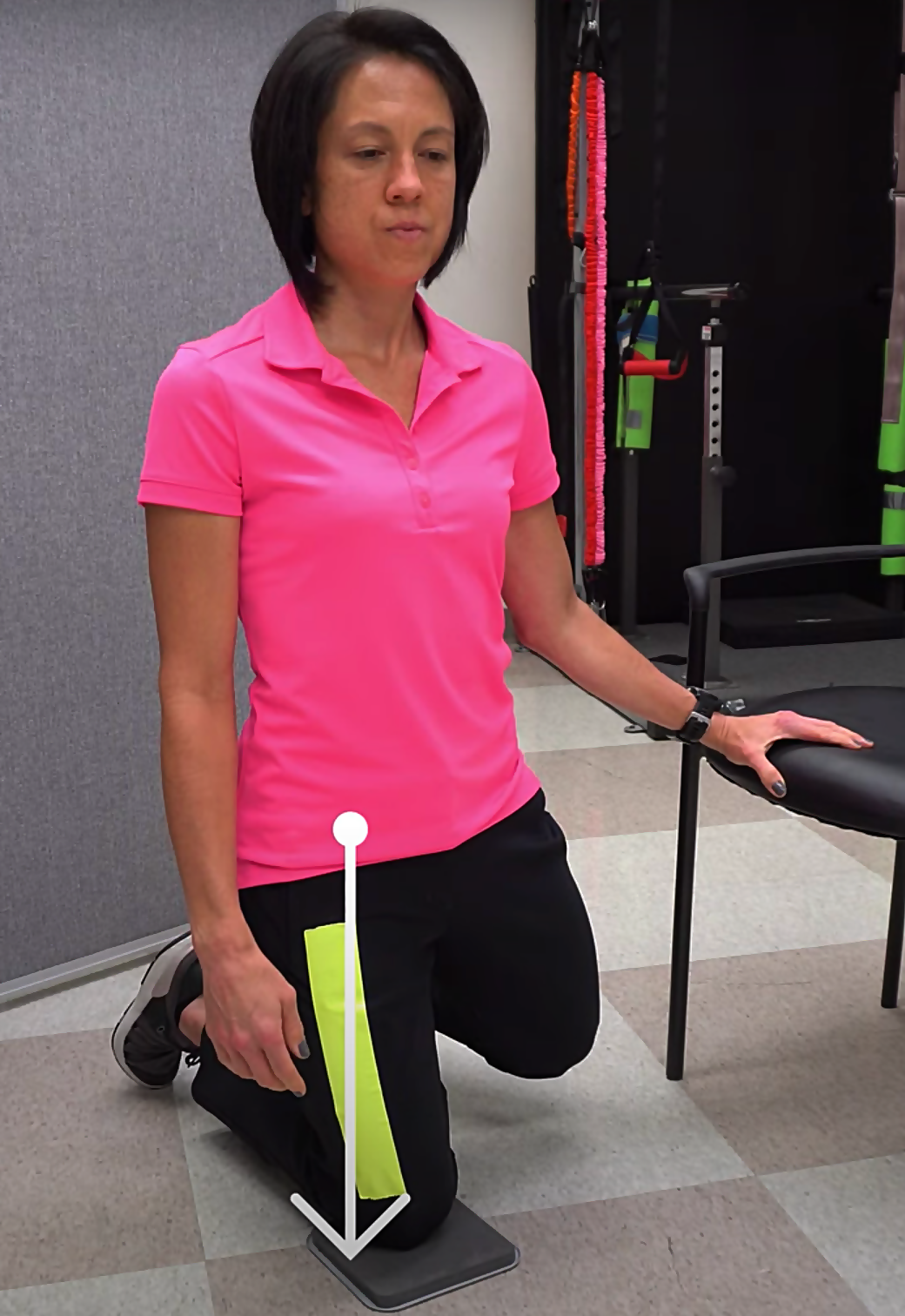
2. Kneeling to Half Kneeling
Kneeling to half kneeling repetitions will take the previous exercise just one step further. By bringing the leg all the way through, you are further challenging that involved hip. Make sure for this exercise that you “squeeze you bottom” in the involved leg and keep your chest pointing toward the ceiling.
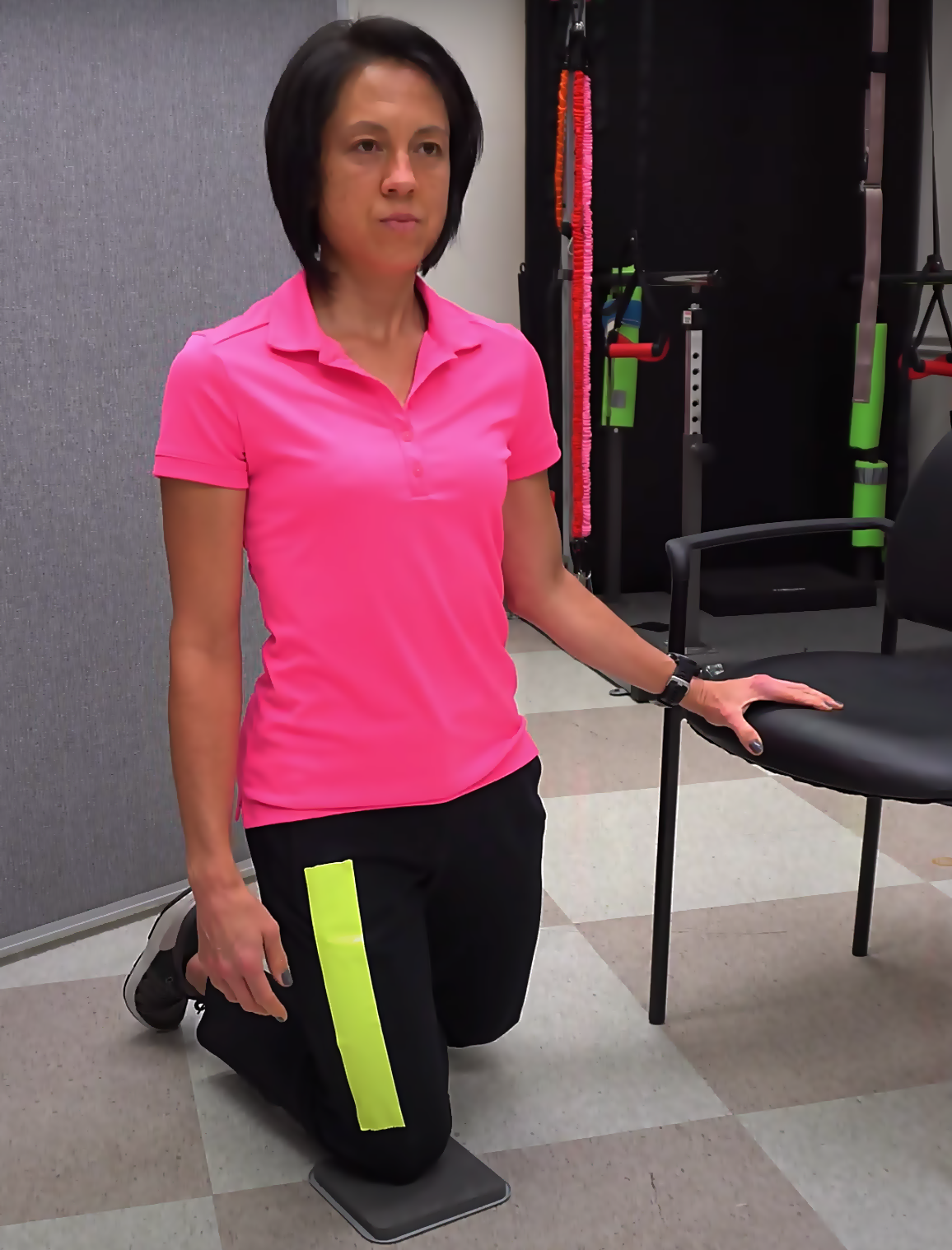
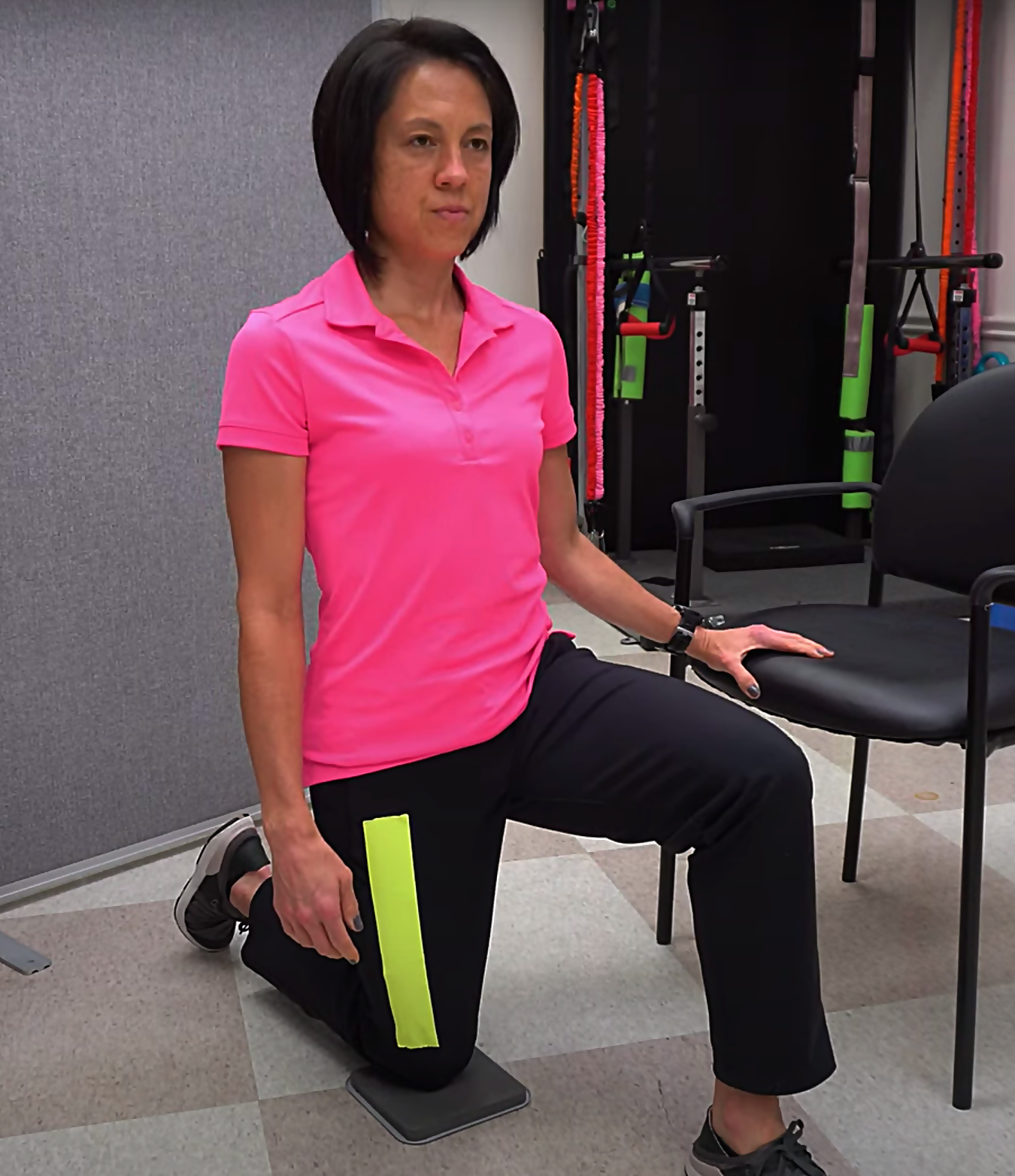
3. Kneeling with Karate Chop
Once you are able to maintain this half kneeling position without holding on, you can try this diagonal movement with the arms. This movement will help to start to disassociate the upper body and the lower body (allow upper body and lower body to move independent of each other). This is an important component of being able to walk with a natural trunk rotation.
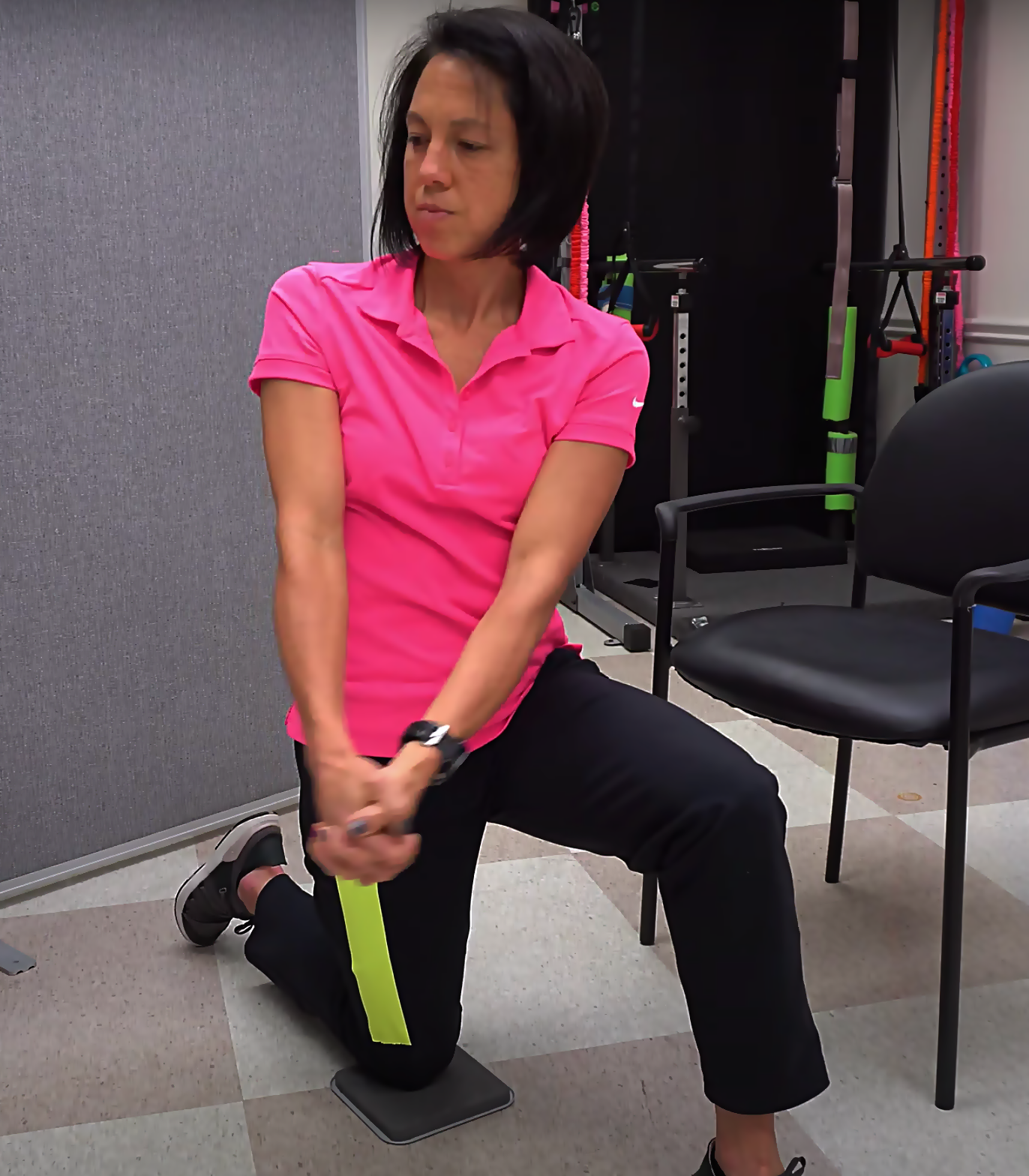
4. Standing Balance with Medicine Ball (rolling forward and backward)
Rolling a medicine ball forward and backward adds an additional challenge and will really require much more control in the involved leg compared to a simple toe tap. Hold on for safety.
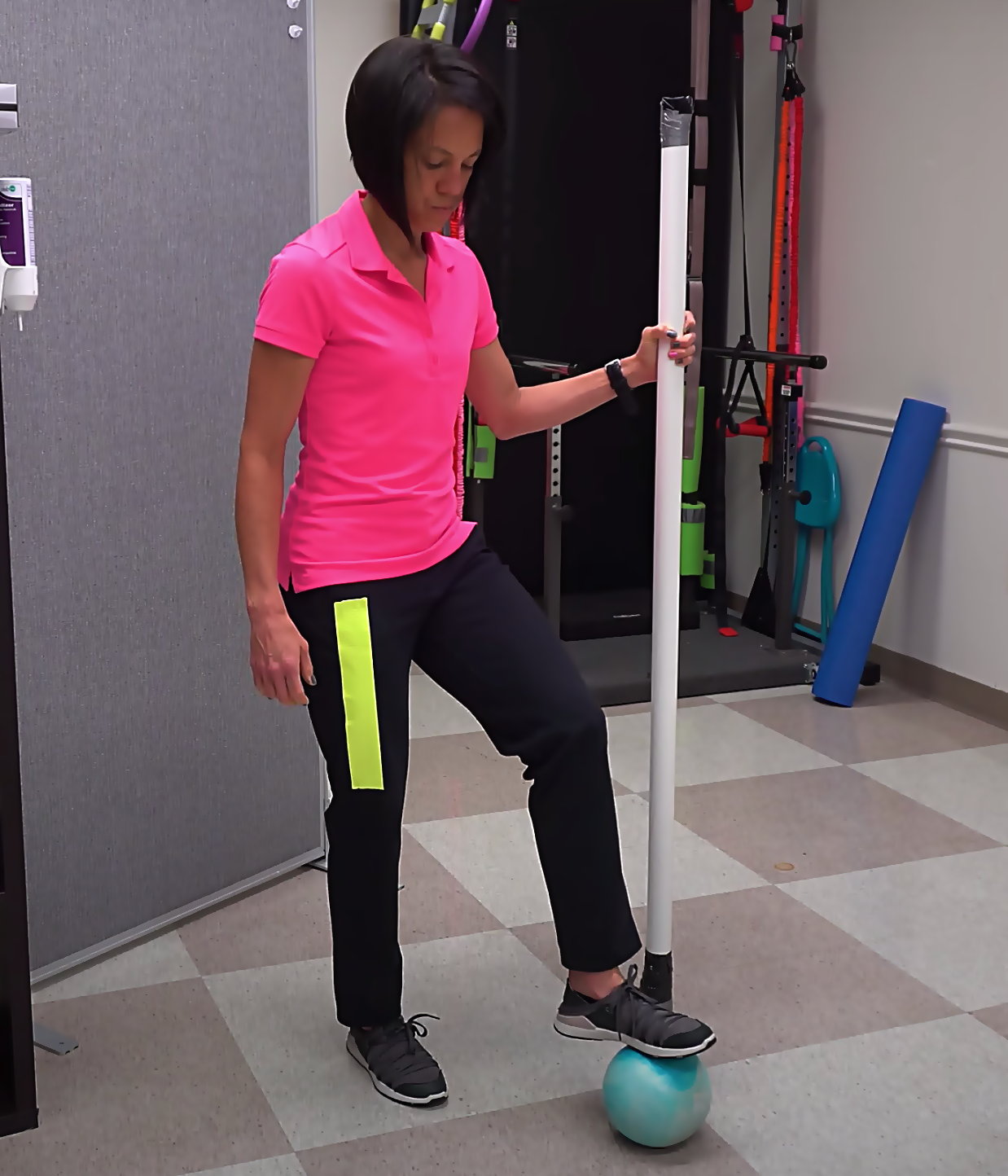
Once you are able to roll the ball forward and backward, you can add a half moon pattern. This will require you to cross midline. This requires more hip control. Crossing midline is also a skill that is sometimes difficult after a stroke or a brain injury. Therefore, it is good to incorporate this type of activity as much as possible.
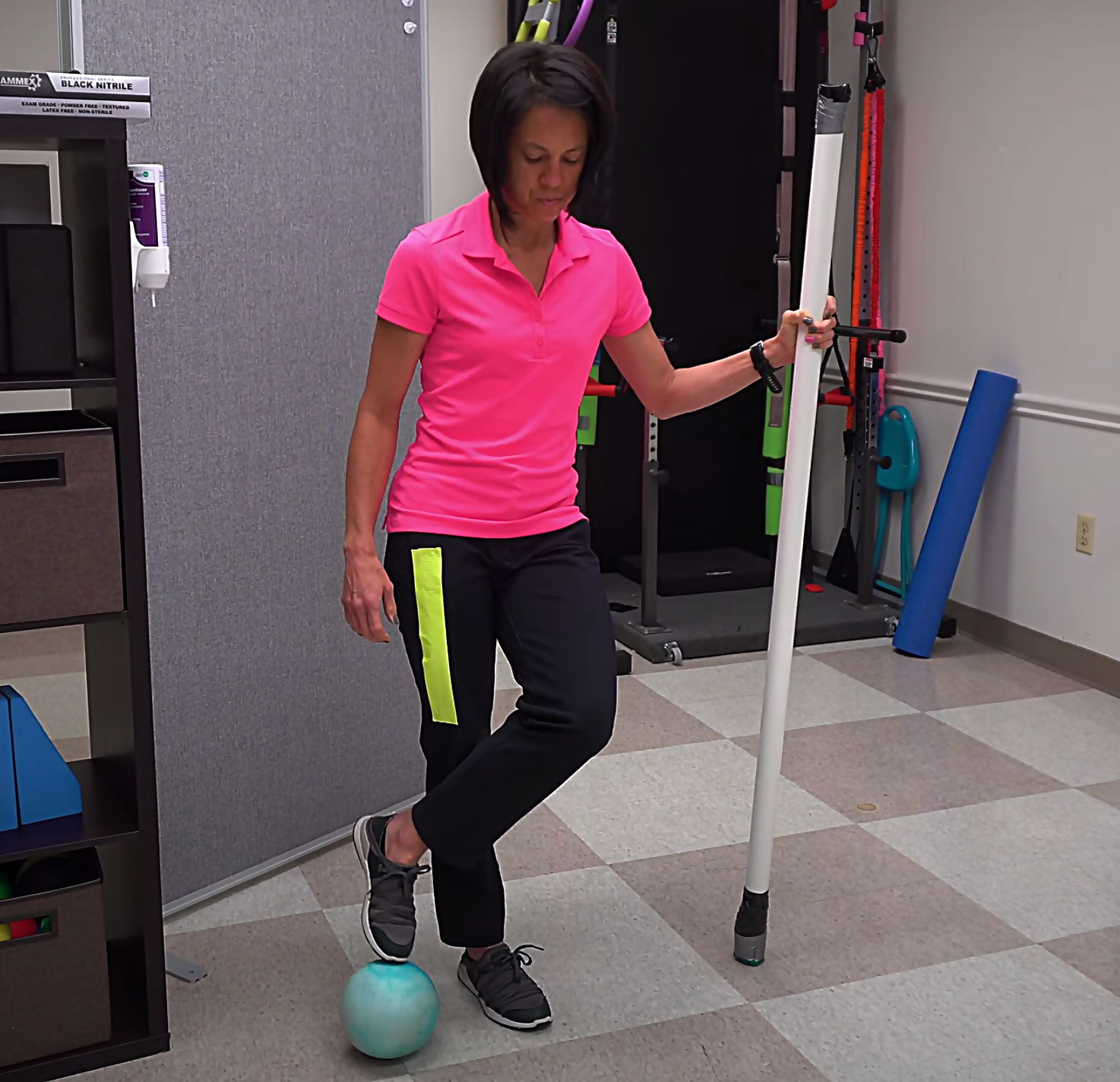
5. Standing Balance with Stacking Cones
Toe taps on these cones will help to work on the accuracy of your foot placement.
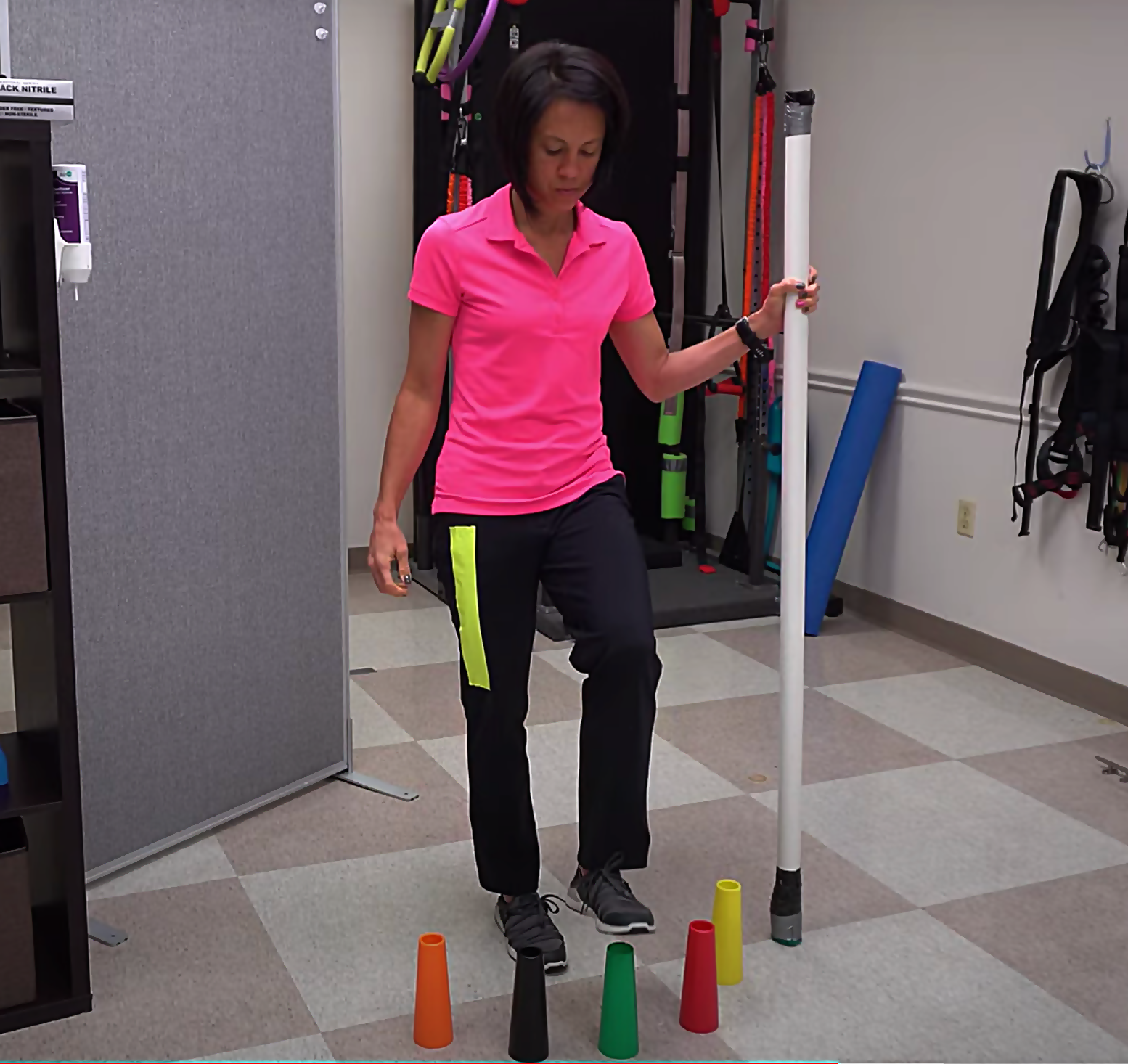
Again, place cones on the outside of the involved leg and work on crossing midline.
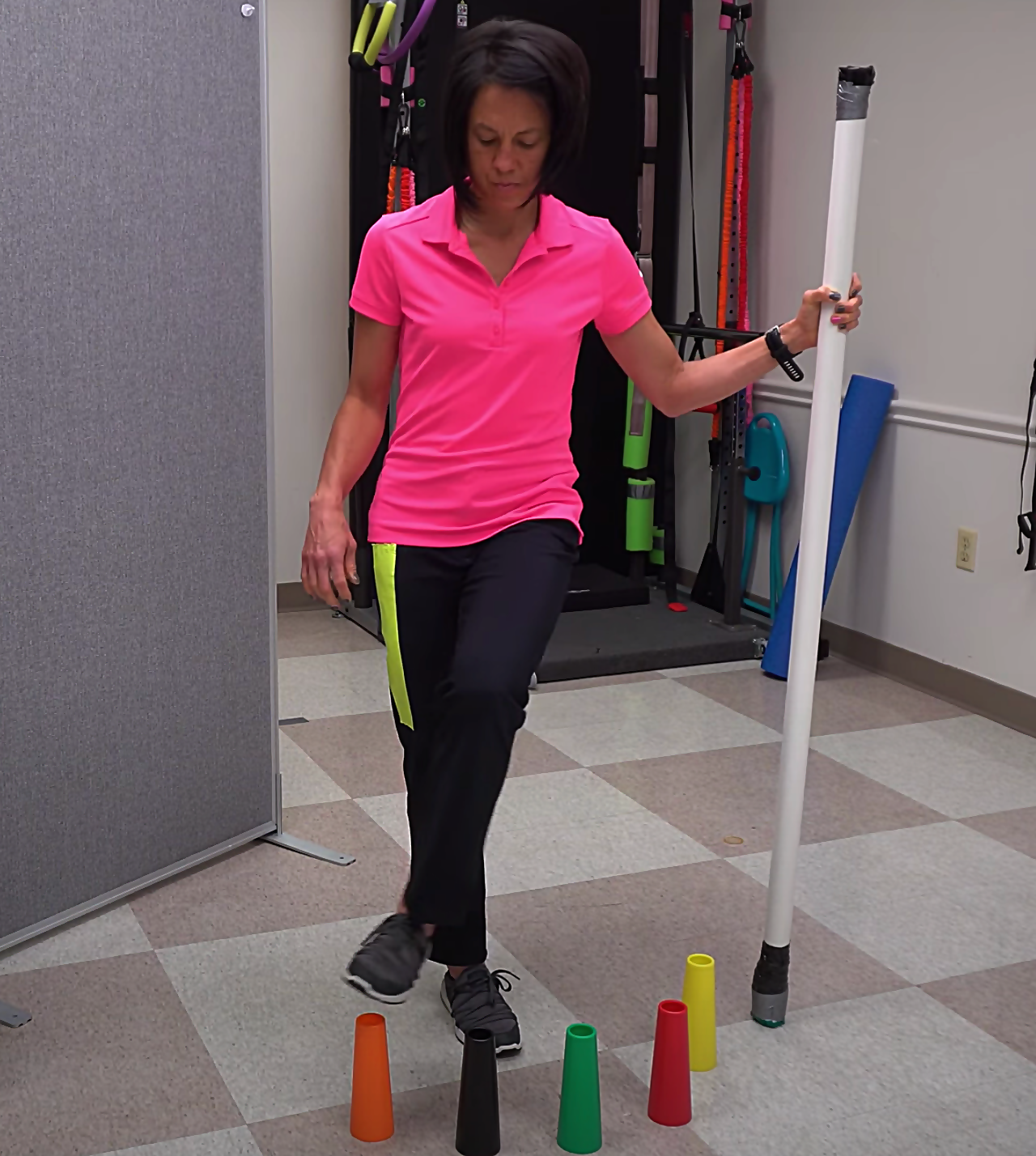
Video with this complete series:
More Articles You Might Be Interested In:
Knee Hyperextension after a Stroke: Causes and Treatment
What is Knee Hyperextension after a Stroke? Knee hyperextension is a common problem after a stroke. Knee hyperextension is when the knee goes beyond a straight position. Yeah, not exactly natural looking or feeling. ? Knee hyperextension (recurvatum) usually happens...
Balance Problems After a Stroke
Balance is an even distribution of weight within a base to maintain an upright position. Balance problems are very common after a stroke. Balance is a critical part of almost all of our daily activities. Lack of balance confidence can elicit fear and anxiety. More...
